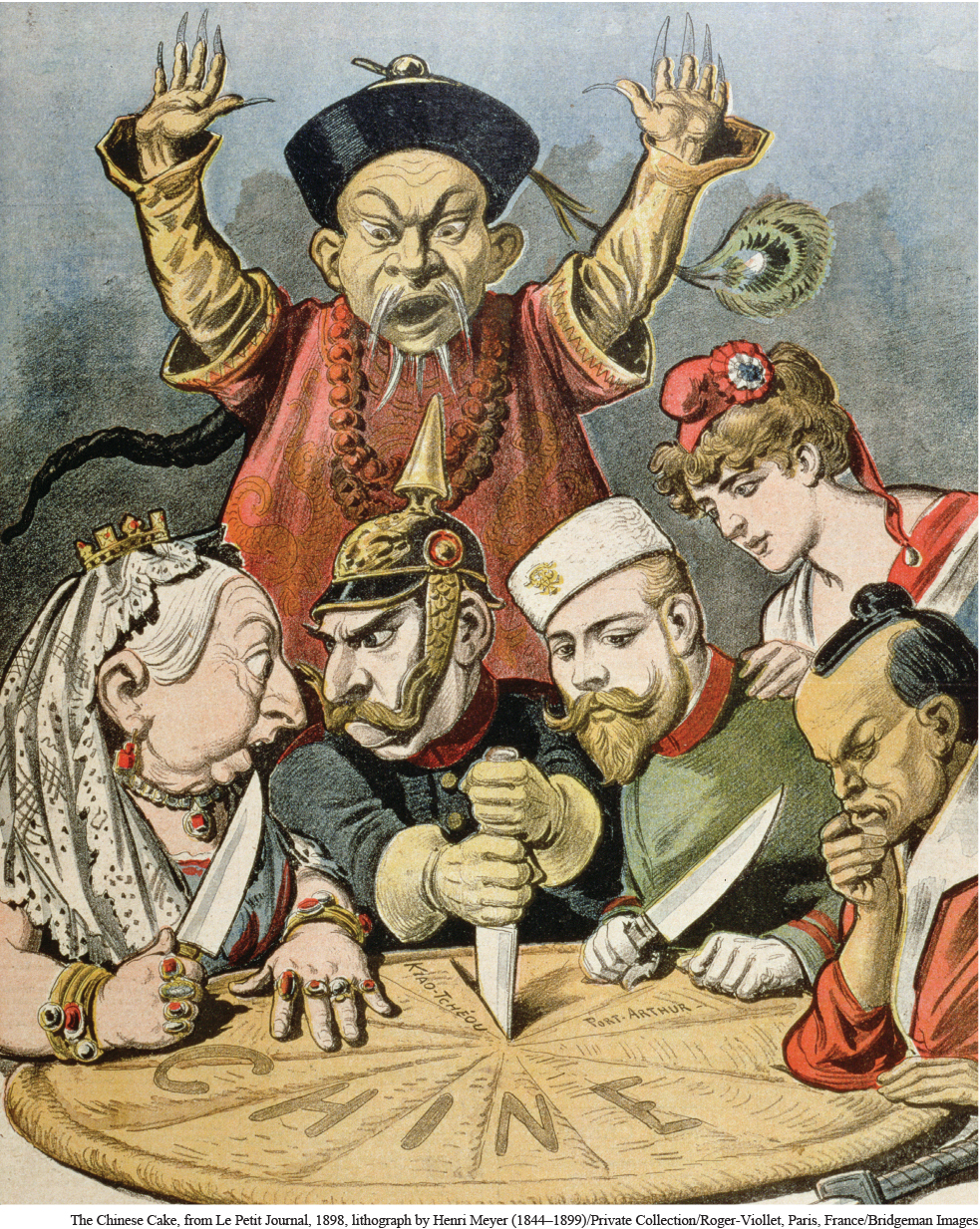Introduction to Chapter 19
CHAPTER 19
Empires in Collision
Europe, the Middle East, and East Asia 1800–1900

“In the 170-
C hina was among the countries that confronted an aggressive and industrializing West while maintaining its formal independence, unlike the colonized areas discussed in Chapter 18. So too did Japan, the Ottoman Empire, Persia (now Iran), Ethiopia, and Siam (now Thailand). Latin America also falls in this category (see “The Industrial Revolution and Latin America in the Nineteenth century” in Chapter 17). These states avoided outright incorporation into European colonial empires, retaining some ability to resist European aggression and to reform or transform their own societies. But they shared with their colonized counterparts the need to deal with four dimensions of the European moment in world history. First, they faced the immense military might and political ambitions of rival European states. Second, they became enmeshed in networks of trade, investment, and sometimes migration that arose from an industrializing and capitalist Europe to generate a new world economy. Third, they were touched by various aspects of traditional European culture, as some among them learned the French, English, or German language; converted to Christianity; or studied European literature and philosophy. Fourth, and finally, they too engaged with the culture of modernity — its scientific rationalism; its technological achievements; its belief in a better future; and its ideas of nationalism, socialism, feminism, and individualism. In those epic encounters, they sometimes resisted, at other times accommodated, and almost always adapted what came from the West. They were active participants in the global drama of nineteenth-
Dealing with Europe, however, was not the only item on their agendas. Population growth and peasant rebellion wracked China; internal social and economic changes eroded the stability of Japanese public life; the great empires of the Islamic world shrank or disappeared; rivalry among competing elites troubled Latin American societies; Ethiopia launched its own empire-building process even as it resisted European intrusions. (See Zooming In: 1896: The Battle of Adowa.) Encounters with an expansive Europe were conditioned everywhere by particular local circumstances. Among those societies that remained independent, albeit sometimes precariously, while coping simultaneously with their internal crises and the threat from the West, this chapter focuses primarily on China, the Ottoman Empire, and Japan. Together with Latin America, they provide a range of experiences, responses, and outcomes and many opportunities for comparison.
| A MAP OF TIME | |
|---|---|
| 1793 | Chinese reject British requests for open trade |
| 1798 | Napoleon invades Egypt |
| 1830s | Famine and rebellions in Japan |
| 1838–1842 | First Opium War in China |
| 1839–1876 | Tanzimat reforms in the Ottoman Empire |
| 1850–1864 | Taiping Uprising in China |
| 1853 | Admiral Perry arrives in Japan |
| 1856–1858 | Second Opium War in China |
| 1868 | Meiji Restoration in Japan |
| 1894–1895 | Japanese war against China |
| 1896 | Ethiopian defeat of Italy preserves Ethiopia’s independence |
| 1898–1901 | Boxer Uprising in China |
| 1904–1905 | Russo- |
| 1908 | Young Turk takeover in Ottoman Empire |
| 1910 | Japan annexes Korea |
| 1911–1912 | Chinese revolution; end of Qing dynasty |
SEEKING THE MAIN POINT
What differences can you identify in how China, the Ottoman Empire, and Japan experienced Western imperialism and responded to it? How might you account for those differences?